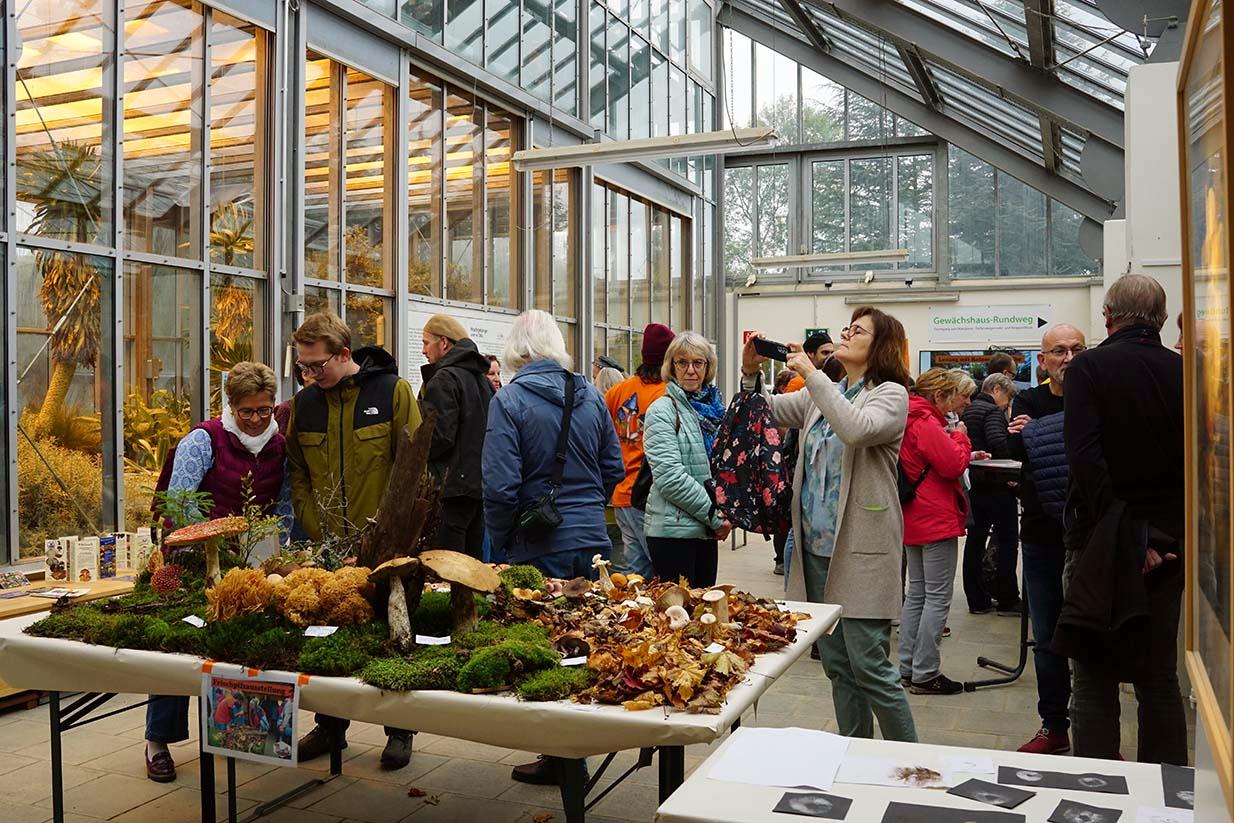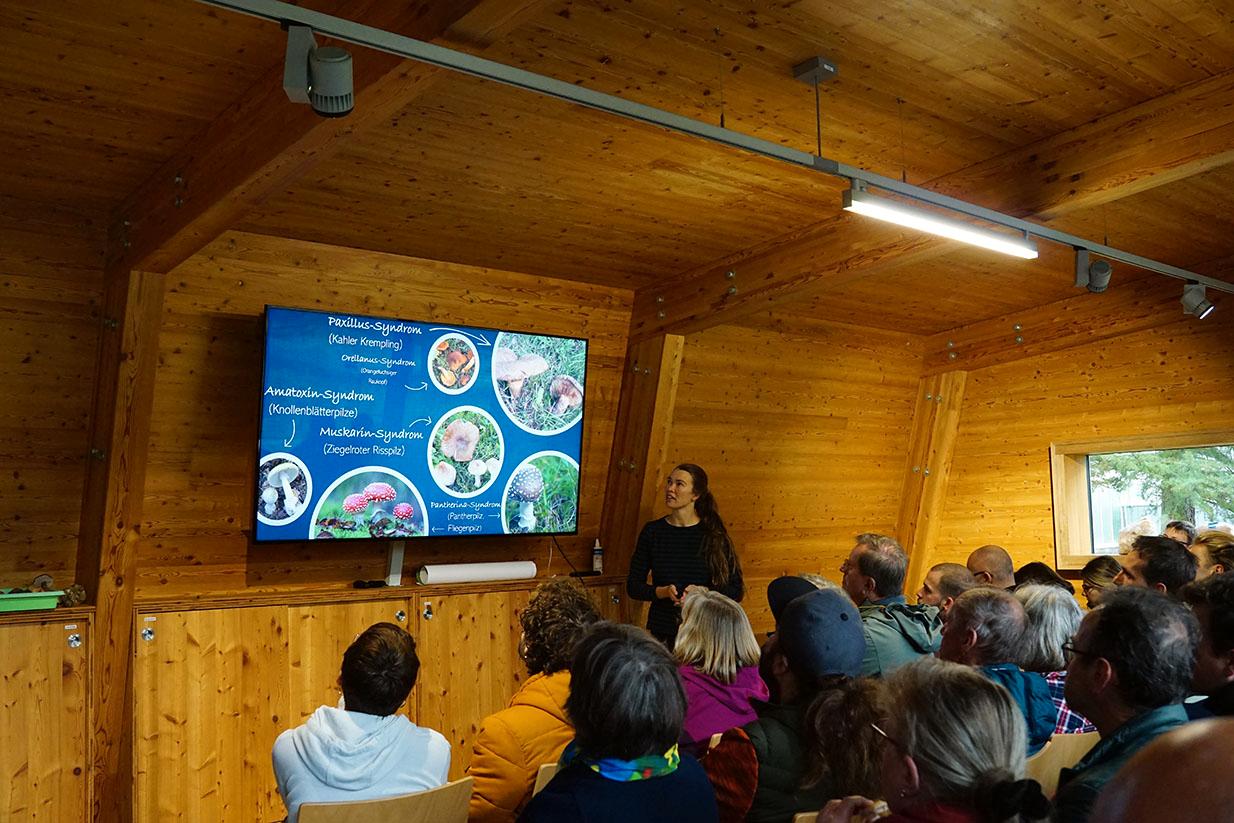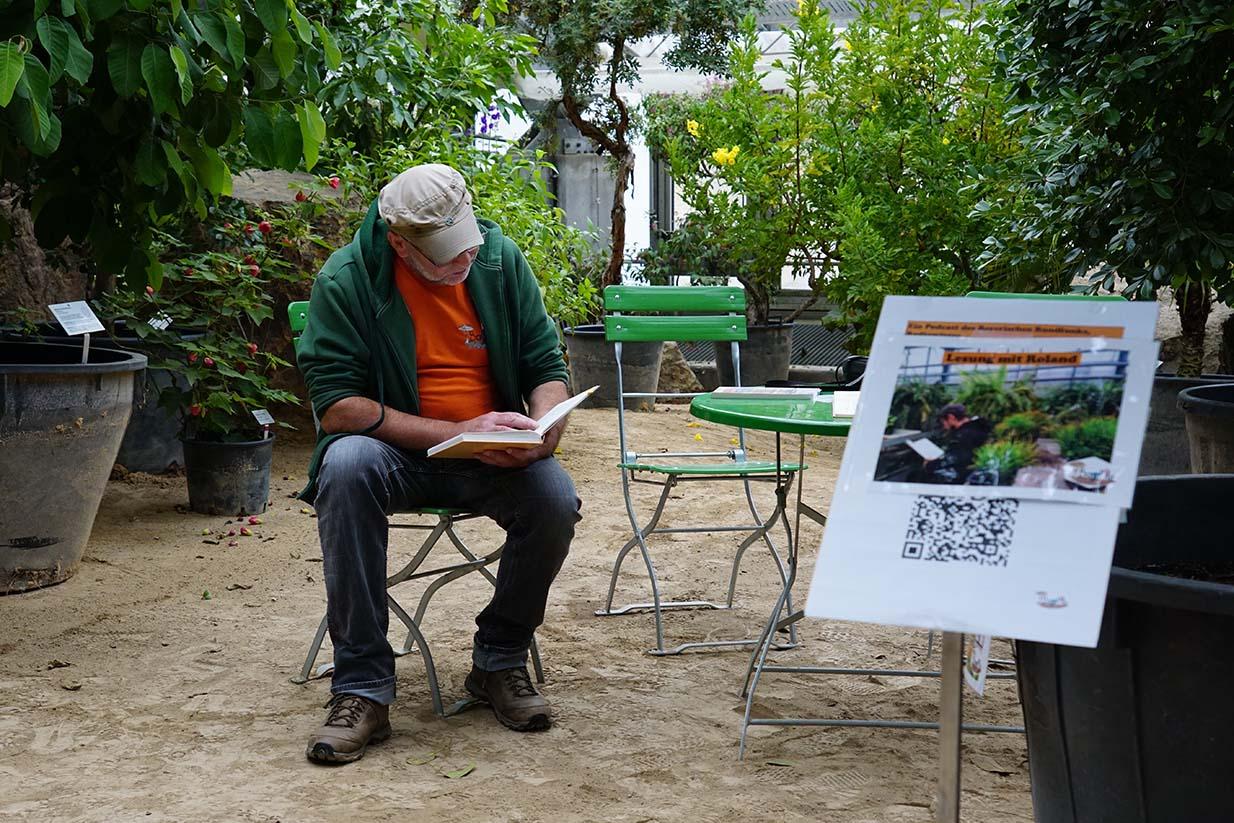News
Bayreuth Fungi Days (BayPilz) 2025
On the second weekend of October, the Ecological-Botanical Garden (ÖBG) of the University of Bayreuth was once again transformed into a paradise for mushroom enthusiasts. Text by Andreas Wild, Tom Zimmermann, Dr. Franziska Zahn, Dr. Robert Weigel

© Alexandra Seifert
The Bayreuth Fungi Days (Bayreuther Pilztage, BayPilz) took place for the second time on 11th and 12th October 2025 – impressively demonstrating that the topic of fungi is not only scientifically intriguing but also captivating to experience. With over 1,400 visitors and an even more diverse programme than the previous year, the event proved once again to be a resounding success.

© Alexandra Seifert
Of Shapes, Colours and Functions
As in the previous year, the fresh mushroom exhibition offered a colourful and varied display of native species, featuring fruiting bodies of over 160 mushroom types collected from the Bayreuth region. Supplemented by information boards on fungal peculiarities and their ecological roles, a station for determining spore print colour, and a station exploring mushroom scents, the exhibition became a multi-sensory experience.
From Foraging to Cultivation
Popular features, as during the first Bayreuth Fungi Days, included guided mushroom walks through the ÖBG with experts Wolfgang Fischer and Tizian Zahn. A mushroom rally led participants across the garden grounds, encouraging independent exploration. Children were invited to engage with fungi through a hands-on educational programme led by environmental educator Annette Högerle.
For the first time, visitors were able to bring their own mushroom baskets for inspection by certified mushroom experts Philipp Sikorra and Oliver Frank. The lecture “Poisonous Mushrooms and Mycotoxins” by Christina Marburger (Chair of Agroecology, University of Bayreuth) placed a stronger emphasis on poisoning prevention. In his talk “Edible Mushrooms”, Wolfgang Fischer explained how to reliably distinguish edible fungi from their toxic lookalikes.
Workshops on cultivating edible mushrooms, led by David Naubert (mushroom cultivation expert and geoecology student in Bayreuth), were once again met with great interest.

© Alexandra Seifert
↵
From the Microscope to DNA Analysis
Visitors also had the opportunity to peek behind the scenes of scientific fungal research and gain insight into the methods used to learn more about fungi.
A central theme was the fascinating interaction between fungi and plants: the so-called mycorrhiza. In a lecture, Prof. Johanna Pausch (chair of Agroecology) explored the mycorrhizal symbiosis and its influence on the carbon cycle in forest soils.
A highlight of the Bayreuth Mushroom Days was the laboratory station, where attendees could observe mycorrhizal structures in and on plant roots under the microscope. Additionally, impressive microscopy images of fungal spores and spore-bearing structures (basidia, asci), created by Matthias Reul, were on display.
Short, interactive film sequences – produced in collaboration with the Centre for University Teaching (ZHL) at the University of Bayreuth – showed how researchers identify fungal species, from macroscopic observation to microscopic analysis and DNA sequencing.
Of History and Stories
Cultural aspects also featured in this year’s Bayreuth Mushroom Days: an exhibition area on the history of fungi in the region presented initial historical research by Tom Zimmermann (Institute for Franconian Regional History), highlighting both natural and cultural scientific perspectives on fungi in the Bayreuth area.
Roland Kastner (amateur mycologist and ÖBG gardener) showcased parts of his extensive collection of mushroom-related books in the BayPilz “Mushroom Library” and created a special moment with a reading of local stories about mushrooms during the two-day event.
Thanks to a collaboration with Bayerischer Rundfunk, visitors could listen to the Radiowissen episode “The Power of Fungi – How They Shape Life” in the Mediterranean House. The audio feature is available here.

